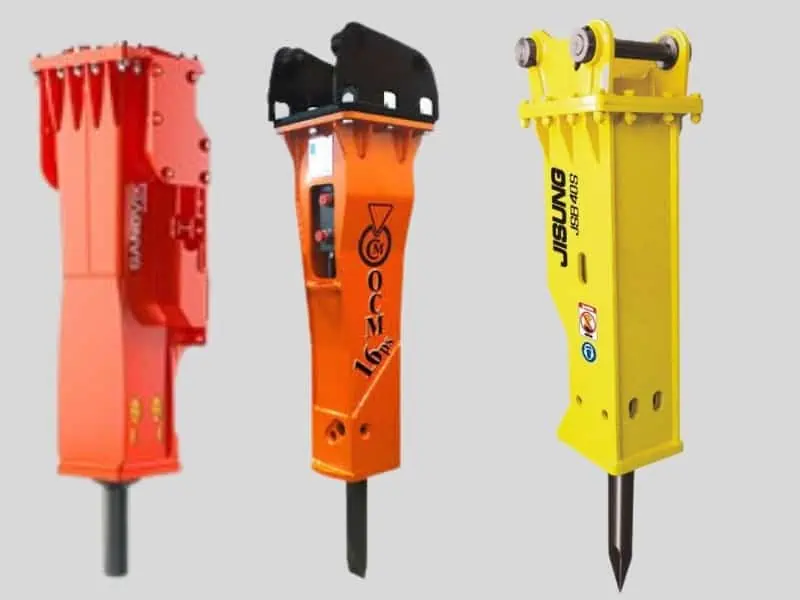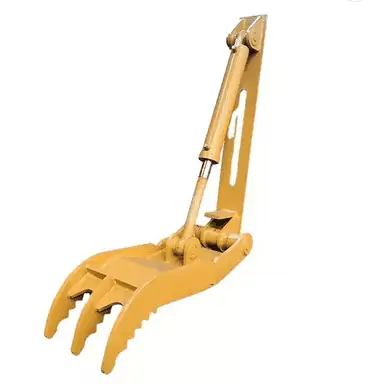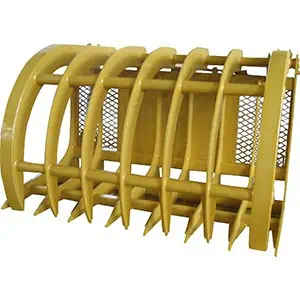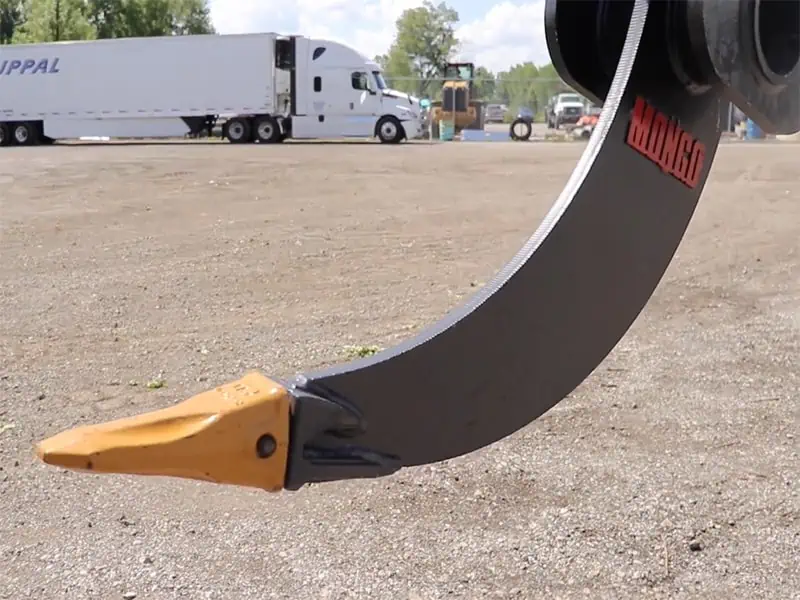Mini excavators are highly versatile and efficient machines in the construction and landscaping industries. Their functionality can be significantly enhanced with the right attachments. In this blog post, we’ll explore the seven most important attachments for mini excavators that can transform your work and make your projects more successful.
Table of Contents
ToggleBuckets
Buckets are perhaps the most common and essential attachment for mini excavators. There are different types of buckets available, each serving a specific purpose. The general-purpose bucket is a great all-rounder. It can be used for digging, scooping, and moving various materials such as soil, sand, and gravel. When you’re working on a small excavation project, this bucket will be your go-to tool.
For more specialized tasks, there’s the trenching bucket. If you’re laying pipes, cables, or drainage systems, the trenching bucket is designed to create narrow, deep trenches with precision. The shape and design of the trenching bucket allow for efficient removal of material and maintaining the integrity of the trench walls.
Another type is the grading bucket. When you need to level the ground or create a smooth surface, the grading bucket comes in handy. It has a wider and flatter design compared to other buckets, enabling you to spread and grade materials evenly. You can use it for preparing a building site, landscaping projects like creating a flat lawn area, or for road construction in small-scale applications.
When choosing a bucket, consider the size and capacity that match your mini excavator’s capabilities. A bucket that’s too large can put excessive strain on the machine, while a too-small bucket might reduce productivity. Also, look at the quality of the bucket’s construction. High-quality buckets made from durable materials will last longer and provide better performance.

Hydraulic Breakers
Hydraulic breakers are indispensable when dealing with hard materials like concrete, rock, or asphalt. They work by using the hydraulic power of the mini excavator to deliver high-impact blows. These breakers can save you a significant amount of time and labor compared to manual demolition methods.
There are different sizes and power levels of hydraulic breakers available. For smaller mini excavators, you’ll need a breaker that’s appropriately sized to avoid overloading the machine. The power of the breaker is usually measured in foot pounds of impact energy. When working on a demolition project, make sure to assess the hardness of the material you’re breaking. If you’re dealing with thick concrete slabs, you’ll need a more powerful breaker.
When operating a hydraulic breaker, safety is of utmost importance. Always wear appropriate personal protective equipment, including ear protection, as the noise generated by the breaker can be extremely loud. Also, make sure the area around the work site is clear of debris and bystanders to prevent any flying objects from causing harm.

Thumbs
A thumb attachment for your mini excavator can greatly increase its handling capabilities. Thumbs are designed to be able to grip and hold objects, similar to how our thumbs work. They are especially useful when you’re handling irregularly shaped objects or when you need to pick up and place materials with more control.
For example, if you’re working on a site with a lot of debris that needs to be sorted and removed, a thumb attachment allows you to easily grab and lift pieces of wood, metal, or other materials. In landscaping projects, you can use the thumb to handle large rocks or tree branches. Thumbs can be either fixed or hydraulic. Hydraulic thumbs offer more flexibility as you can adjust the grip strength according to the object you’re handling.
When installing a thumb attachment, make sure it’s properly aligned and secured to the mini excavator’s arm. Check the range of motion and the strength of the attachment regularly to ensure safe and efficient operation.

Augers
Augers are great for drilling holes in the ground. They are commonly used for tasks such as planting trees, installing fence posts or creating holes for foundation piers in small construction projects. The auger attachment consists of a rotating helical screw that penetrates the soil.
There are different auger bit sizes available, depending on the diameter of the hole you need to drill. For tree planting, you might use a smaller diameter auger, while for fence post installation, a larger diameter auger might be required. The length of the auger bit also varies, and you should choose one that’s suitable for the depth of the hole you need to make.
When using an auger attachment, it’s important to start the hole slowly and steadily. Make sure the mini excavator is on a stable surface to prevent it from tipping over during the drilling process. Also, be careful not to over-torque the auger, as this can cause damage to the attachment or the excavator’s hydraulic system.

Grapples
Grapples are excellent for handling loose materials such as logs, brush, and scrap metal. They have a claw-like design that can be opened and closed hydraulically. Grapples provide a firm grip on the materials, allowing you to lift and move them easily.
In forestry work, grapples are used to pick up and transport felled trees. They can also be used in recycling yards to handle scrap metal. The design of the grapple may vary depending on the type of material it’s intended to handle. For example, grapples for handling logs may have a different shape and tine configuration compared to those for handling brush.
When operating a grapple attachment, make sure the load is balanced within the grapple’s capacity. Uneven loading can cause the grapple to lose its grip or the mini excavator to become unstable. Regularly check the hydraulic lines and connections of the grapple to ensure smooth operation.

Rippers
Rippers are attachments that are used to break up hard, compacted soil or rock. They have a pointed or toothed design that penetrates the ground and loosens the material. Rippers are useful in construction projects where the ground needs to be prepared for excavation or grading.
For example, if you’re working on a site with a layer of hardpan soil, a ripper attachment can break it up, making it easier to dig with a bucket. In road construction, rippers can be used to break up old asphalt or concrete surfaces before removal. The depth and angle of the ripper can usually be adjusted to suit the specific conditions of the job.
When using a ripper, it’s important to work in a systematic manner. Start at one end of the area to be ripped and work your way across. Be aware of the force exerted by the ripper on the mini excavator, and if you notice any excessive vibration or strain on the machine, stop and check for any issues.

Plate Compactors
Plate compactors are attachments that are used to compact soil, gravel, or other granular materials. They are essential in construction and landscaping projects where a stable and level surface is required. The plate compactor attachment consists of a vibrating plate that applies pressure to the material, reducing air voids and increasing density.
In building construction, plate compactors are used to prepare the sub-base for foundations. In landscaping, they can be used to compact the soil under a patio or a walkway. When using a plate compactor attachment, make sure to move the mini excavator in a slow and overlapping pattern to ensure even compaction. The speed of the vibration can usually be adjusted to suit the type of material being compacted.

In conclusion, these seven attachments-buckets, hydraulic breakers, thumbs, augers, grapples, rippers, and plate compactors-can greatly expand the capabilities of your mini excavator. Whether you’re in the construction, landscaping, or demolition industry, choosing the right attachments for your specific tasks can improve productivity, efficiency, and the quality of your work. Regular maintenance and proper operation of these attachments are also crucial to ensure their longevity and safe use. So, next time you’re planning a project with your mini excavator, consider which of these attachments will best suit your needs and take your work to the next level.
